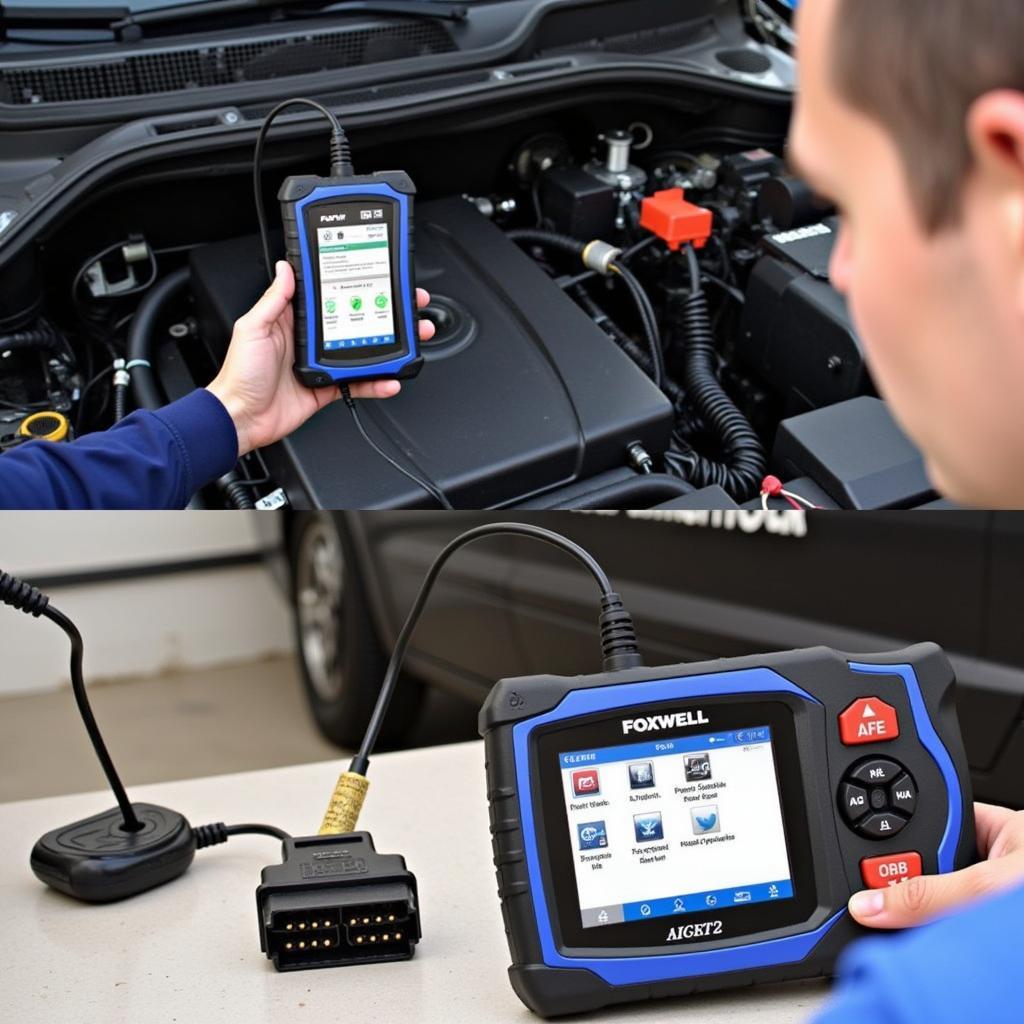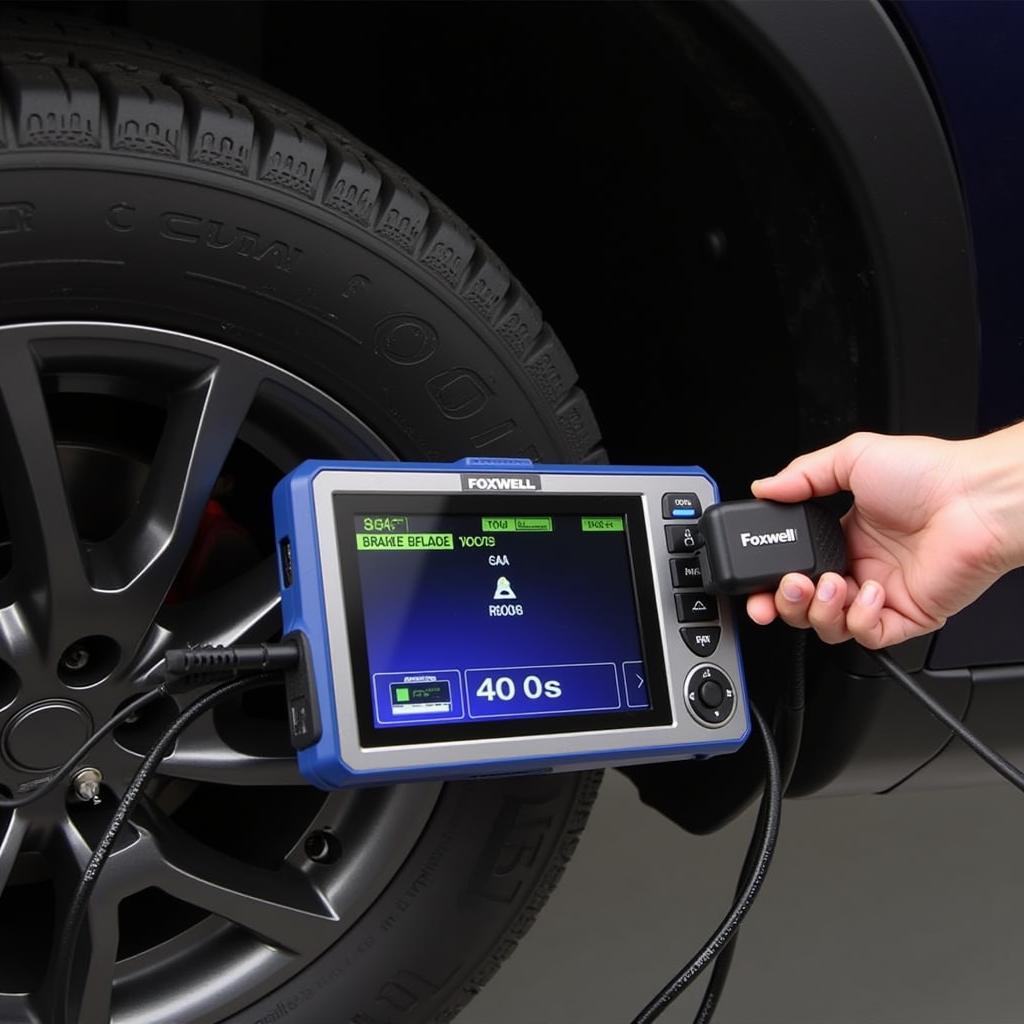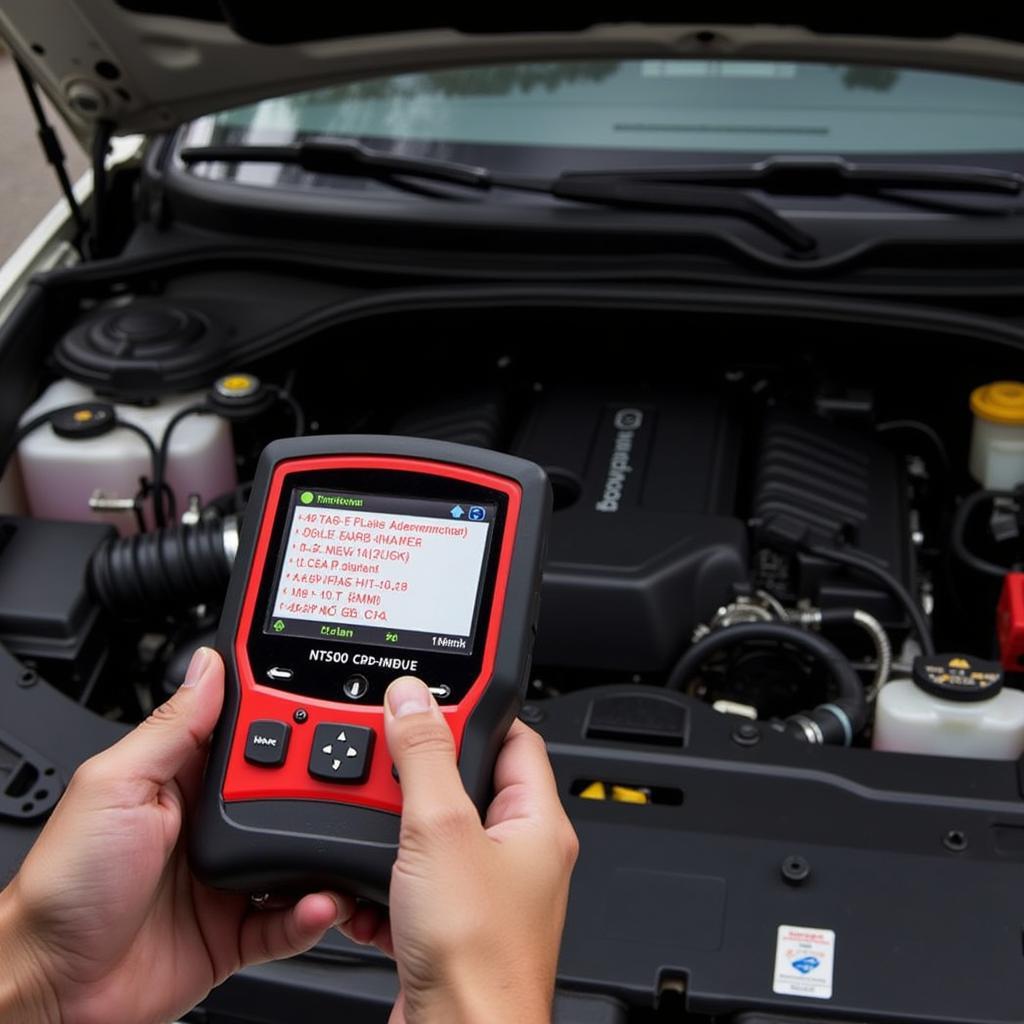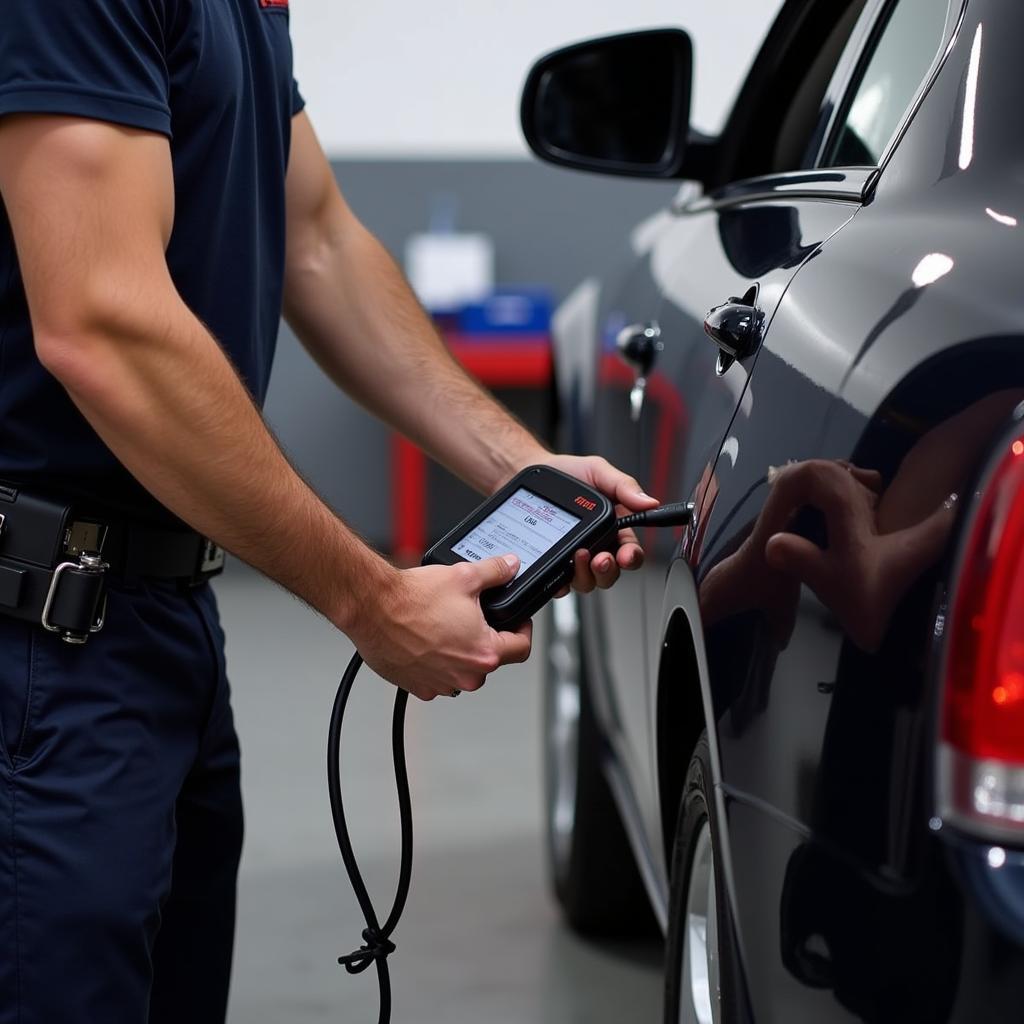Foxwell Scanner Evap Testing is a crucial aspect of modern vehicle diagnostics. Understanding how to effectively use a Foxwell scanner for EVAP system diagnostics can save you time and money, whether you’re a professional mechanic or a car enthusiast. This guide will provide a detailed overview of Foxwell scanner evap testing, covering everything from understanding the EVAP system to interpreting test results.
Understanding the EVAP System and its Importance
The Evaporative Emission Control (EVAP) system prevents fuel vapors from escaping into the atmosphere. It captures these vapors and stores them in a charcoal canister, later purging them into the engine for combustion. A malfunctioning EVAP system can lead to fuel smell, reduced fuel efficiency, and even failed emissions tests. Regular Foxwell scanner evap testing is key to maintaining a healthy EVAP system.
Why Choose a Foxwell Scanner for EVAP Testing?
Foxwell scanners are renowned for their comprehensive diagnostic capabilities, especially in EVAP system testing. They offer advanced features such as bi-directional control tests, which allow you to activate components within the EVAP system to pinpoint the exact location of a leak or malfunction. This level of control is often unavailable with generic OBD2 scanners. Using a Foxwell scanner for accurate diagnosis is a smart investment for any car owner or mechanic. Similar to the foxwell i70 pro car diagnostic system, other Foxwell models offer specialized functions tailored to specific makes and models, providing even more precise diagnostics.
How Does Foxwell Scanner Evap Testing Work?
Foxwell scanners communicate with your vehicle’s onboard computer (ECU) to access diagnostic trouble codes (DTCs) related to the EVAP system. They can also perform various tests, including leak detection, purge flow, and canister vent control tests. These tests help identify issues such as leaks in hoses, faulty valves, or a clogged charcoal canister.
 Foxwell Scanner EVAP Test Setup
Foxwell Scanner EVAP Test Setup
Performing a Foxwell EVAP System Test: A Step-by-Step Guide
- Connect the Foxwell scanner to the vehicle’s OBD2 port.
- Turn the ignition on, but do not start the engine.
- Select the “EVAP System Test” option from the scanner’s menu.
- Follow the on-screen instructions to perform the specific test required, such as a leak test or a purge flow test.
- Observe the test results and diagnostic trouble codes (DTCs) displayed on the scanner.
Interpreting Foxwell Scanner EVAP Test Results
Understanding the results of a Foxwell scanner evap test is crucial for effective repairs. The scanner will display DTCs related to any faults found within the EVAP system. You can then use these codes, along with the results of the specific tests performed, to identify the faulty component. Consulting a repair manual or online resources can help you understand the meaning of each DTC and the recommended repair procedure. This process mirrors the foxwell evap system test procedures outlined in the product documentation.
Common EVAP System Issues and Solutions
Some common EVAP system problems detectable with a Foxwell scanner include:
- Loose or damaged gas cap: This is the most common cause of EVAP leaks. Ensure the gas cap is tightened properly.
- Cracked or leaking hoses: Inspect all EVAP hoses for cracks or damage.
- Faulty purge valve: A malfunctioning purge valve can prevent the system from properly purging vapors. This is something that can be diagnosed and confirmed using the foxwell nt301 obd2 scanner professional enhanced.
- Clogged charcoal canister: A clogged canister can prevent the system from storing vapors effectively.
“Regular preventative maintenance, including Foxwell scanner evap testing, can prevent costly repairs down the road,” says John Smith, ASE Certified Master Technician.
How Often Should I Perform a Foxwell Scanner Evap Test?
It’s recommended to perform a Foxwell scanner evap test at least once a year, or whenever you suspect an EVAP system issue. Regular testing, like checking for a foxwell code 1997 camry, can help identify problems early and prevent more serious damage.
 Mechanic Inspecting EVAP System
Mechanic Inspecting EVAP System
Foxwell Scanner Evap Testing: Essential for Modern Vehicle Maintenance
Foxwell scanner evap testing provides a powerful tool for diagnosing and resolving EVAP system issues. By understanding the EVAP system and using a Foxwell scanner effectively, you can maintain your vehicle’s emissions performance, improve fuel efficiency, and avoid costly repairs. As an automotive software and hardware specialist, I strongly recommend incorporating Foxwell scanner evap testing into your regular vehicle maintenance routine. Don’t hesitate to check if the foxwell nt301 work for audi 2010 a4 2.0t or your specific car model. Contact ScanToolUS at +1 (641) 206-8880 or visit our office at 1615 S Laramie Ave, Cicero, IL 60804, USA, for further assistance.
“Investing in a quality diagnostic tool like a Foxwell scanner is a wise decision for any car owner,” adds Jane Doe, Automotive Engineer.



